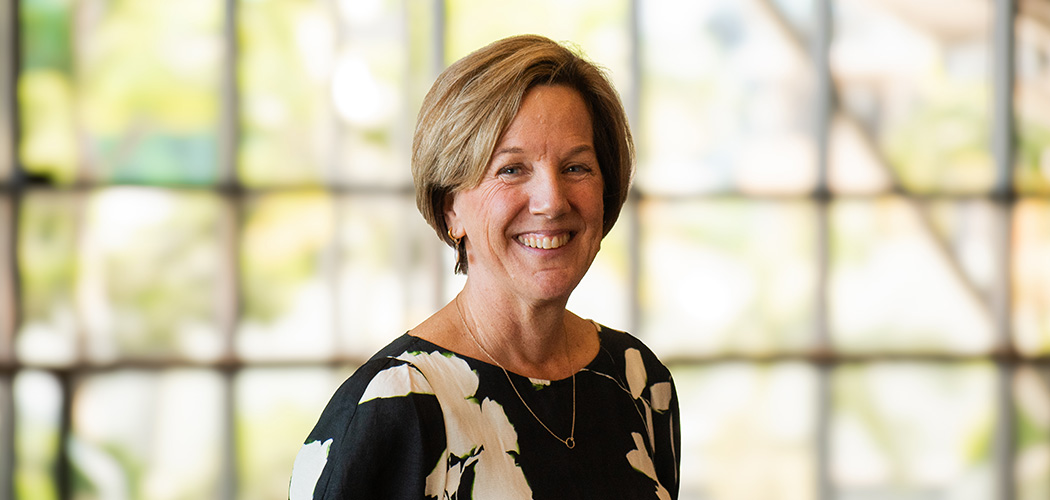The Australian Primary Health Care Nurses Association (APNA) recently appointed Denise Lyons as its new president. The ANMJ takes a look at her priorities looking ahead.
You’ve worked across paediatrics, emergency, and general practice – what drew you to primary health?
One of the most appealing aspects of primary care nursing for me is the opportunity to educate and empower patients to prevent illness and injury. In primary care, we often see patients before they become unwell or at the earliest stages of a condition. This means we can focus on building their understanding of their own health—whether that’s teaching them how to manage risk factors for chronic disease, helping them navigate lifestyle changes, or making sure they feel confident recognising early warning signs.
I find it rewarding to shift the focus from just treating illness to promoting wellness. It’s about partnering with patients, not just telling them what to do, but giving them the knowledge, skills, and confidence to take control of their health. For example, I’ve worked with patients who, through small, achievable changes, have been able to avoid hospital admissions or significantly improve their quality of life. Those moments reaffirm why I love primary care—it’s proactive, it’s personal, and it has a ripple effect, not just for individuals but for their families and communities
How have your early experiences in the US health system shaped your perspective on nursing and primary care in Australia?
When I transitioned from emergency and paediatric care in the US to general practice nursing in Australia, I brought with me a deep commitment to prevention and health literacy. I believed, and still believe, that informed individuals and connected systems are at the heart of better health outcomes. That’s why I pursued a Master’s in Health Promotion. And it’s why I became a Nurse Practitioner in 2012. I’ve always been driven by the desire to make care more accessible, more personal, and more proactive.
You’ve championed health literacy and prevention—what role do you believe primary health care nurses can play in empowering patients in these areas?
Nurses play such an important role – because we can build those relationships with our clients. Through its work with nurse-led clinics, APNA has supported some amazing nurse clinics to do things like cardiovascular disease prevention and other preventative health, across the country. We know those models work – what they need is more funding and support so we can establish more of them.
What are your top priorities as the new President of APNA?
APNA’s core mission includes championing the recognition of primary care nursing, ensuring workforce sustainability, nurturing leadership in health, and strengthening patient-centred care to improve the health of our communities.
APNA has three key advocacy priorities.
- A consistent approach to primary health care in the nursing curriculum, which we’re working with stakeholders on.
- A nationally funded PHC student nurse placement – we’ve seen real progress through our clinical placement programs in aged care and other settings.
- And we want to see greater utilisation of PHC nurses, so that everyone can work to their full scope of practice.
Primary health care nurses often work behind the scenes— what is APNA doing to raise the profile and recognition of this sector?
Before the election, APNA came together with a group of nursing peaks, including the Australian Nursing and Midwifery Federation, for the Nurses are the solution, advocating to government for immediate changes that would unleash nurses’ potential, and raise their profile.
APNA welcomed the Federal Government’s first-ever Primary Health Care Careers Campaign, which aims to elevate the visibility of careers in primary care. APNA sees this as an important step but stresses more must be done to retain nurses in the system—especially in community-based settings.
We’ve seen some positive changes from government, including removing the requirement for ‘collaborative arrangements’, nurse prescribing, and others.
But there’s so much more that we can do – and we’re going to keep pushing for change.
Many nurses feel drawn to hospital-based roles—what would you say to graduates or early-career nurses considering a career in primary care?
Having worked in hospitals in the US and Australia, what drew me to primary health care nursing is the long-term relationships we build with patients and communities. We aren’t just solving problems as they arise; we’re helping prevent them. We’re encouraging lifestyle changes, early interventions, and social connections. We’re walking the path with people, not just pointing them toward it.
What are some of the biggest challenges facing primary healthcare nurses and how is APNA advocating to address them?
Healthcare systems are under pressure everywhere because of workforce shortages, rising costs, aging populations and increasing chronic disease. But this is also a chance to reshape how we deliver care and how we value the role of nurses, putting them at the frontline of these transformations. We know that currently, 30% of nurses in primary health care say that they’re not often or regularly working to their full scope of practice. If we see changes that unleash that potential, that could make a huge difference in a stretched health system.
How do you see the role of primary health care nurses evolving in Australia?
We’ll see changes in technology, and that will impact how we work – whether it’s AI, VR, or other new technology. But the relationship with the patient is always going to be central. We want to see more nurses in primary health care working to their full scope of practice – putting their full skillset to use in building those relationships and caring for their patients.
You’ve dedicated over 30 years to nursing—what keeps you inspired and motivated?
What’s kept me inspired over more than 30 years in nursing is the privilege of making a genuine difference in people’s lives—sometimes in small ways that matter deeply to them. Nursing is such a dynamic profession; no two days are ever the same, and there’s always an opportunity to learn and grow. I’m motivated by the relationships I build with patients, families, and colleagues, and by seeing the tangible outcomes of good care—whether it’s helping someone recover their independence, preventing an illness, or supporting a colleague to develop their skills.
I also draw energy from the bigger picture—being part of health reform, influencing policy, and advocating for the role of primary care nurses. Knowing that my work can have an impact at both the individual and system level keeps me passionate about what I do, even after four decades.
Looking ahead, what’s your vision for the future of primary health care nursing in Australia?
As APNA President, I want to see a healthy Australia, through the delivery of quality, evidence-based care by a bold, vibrant and well supported primary health care nursing workforce.
That means that the benefit of primary health care nursing is recognised in policy, and primary health care nurses are valued, visible and respected.
Some of the changes we’ve seen in recent years are encouraging, but there’s still a lot more to do!








